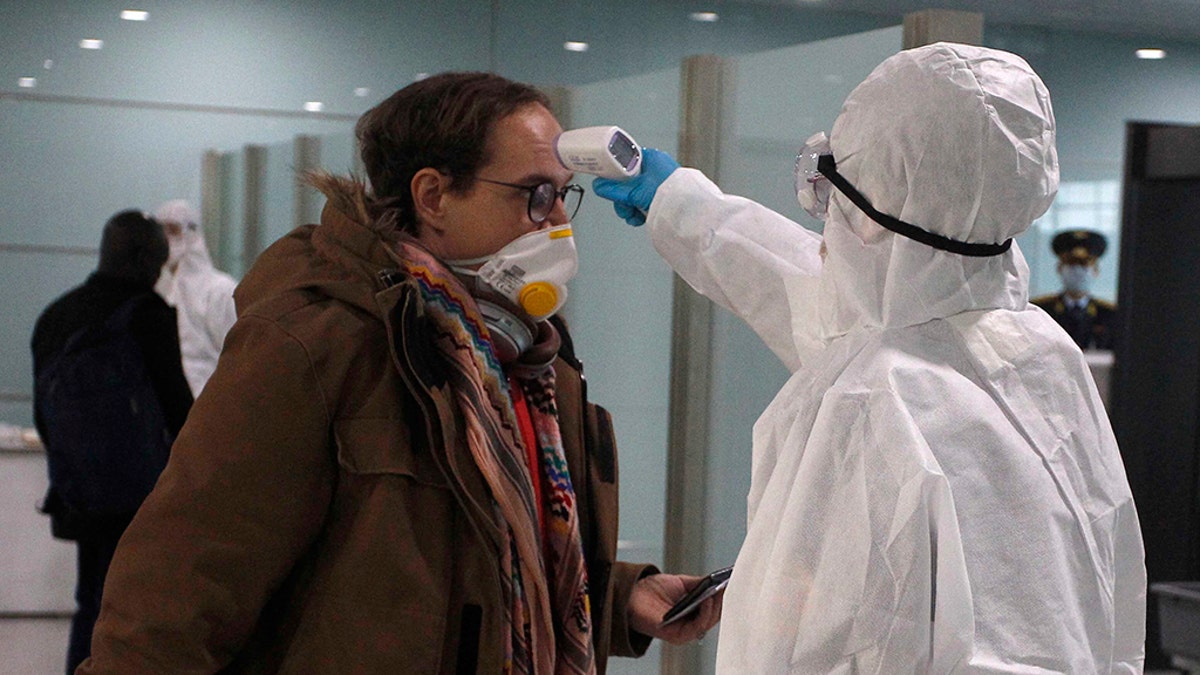Fox News Flash top headlines for March 9
Fox News Flash top headlines are here. Check out what's clicking on Foxnews.com.
SEOUL, South Korea (AP) — A special North Korean flight carrying presumably dozens of diplomats and other foreigners left for Russia's Far East on Monday as the country tightens its lockdown intended to fend off the coronavirus.
North Korea has not publicly confirmed a single case of the COVID-19 illness, but its state media have indicated thousands of people have been quarantined as part of strict prevention measures.
KIM JONG UN SENDS CONDOLENCE LETTER TO SOUTH KOREA OVER CORONAVIRUS OUTBREAK
Seemingly dozens of passengers, most of them masked and some accompanied by children, lined up at Pyongyang International Airport. North Korean health workers wearing white protective suits scanned them for fevers.

A passenger wearing a mask as a precaution against a new coronavirus has his temperature checked before boarding a flight to Vladivostok, Russia, at the Pyongyang International Airport in Pyongyang, North Korea, Monday, March 9, 2020. (AP Photo/Cha Song Ho)
It wasn’t immediately clear how many were on the flight to Vladivostok. The North lifted a monthlong quarantine on foreign diplomats based in Pyongyang on March 2, allowing them to leave the country if needed.
CORONAVIRUS SITUATION IN NORTH KOREA REMAINS UNCLEAR, COULD BE SPECIALLY DEADLY, EXPERT SAYS
The North has called its anti-virus campaign a matter of “national existence” while banning foreign tourists, shutting down nearly all cross-border traffic with China, intensifying screening at entry points and mobilizing health workers to monitor residents and isolate those with symptoms.
CLICK HERE FOR THE FOX NEWS APP
Many experts say North Korea is highly vulnerable to infectious diseases due to its chronic shortage of medical supplies and outdated health care infrastructure.
